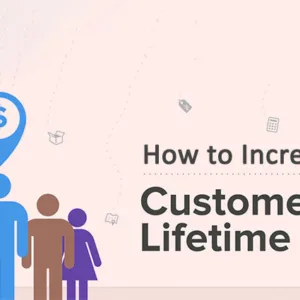Handling sales effectively is a key aspect of any successful business. In the current competitive business landscape, a comprehensive sales enablement strategy has become an essential tool in achieving sales growth and profitability. In this article, we’ll delve into the nuts and bolts of creating an effective sales enablement strategy and how it can help transform your sales operations. Below, we detail the steps necessary for creating an impactful strategy, while also providing insights on frequent mistakes and how to avoid them.
Understanding the Concept of Sales Enablement Strategy
ALT: Sales manager and employee collaborating over a tablet to refine a sales pitch using an enablement app
A sales enablement strategy is a systematic approach aimed at increasing sales by giving the sales team the resources they need. These resources typically include content, tools, knowledge, and information to sell more effectively and efficiently. The foundation of sales enablement is to provide sales associates with what they need to engage the buyer throughout the purchasing cycle.
Sales enablement is process-oriented. It focuses on continuous feedback and iterative improvements to consistently align sales activities to business objectives. Different organizations may interpret and implement sales enablement in different ways, but the objective remains the same – to increase sales productivity and effectiveness.
Sales enablement can be thought of as a strategic, cross-functional discipline designed to increase sales results and productivity by providing integrated content, training, and coaching services for salespeople and front-line sales managers along the entire customer’s buying journey, powered by technology. It’s a strategic, ongoing process that equips sales teams to have consistently effective engagements with prospects and customers throughout the buyer’s journey. Many companies use the sales enablement approach to ensure their sales personnel are equipped with the right skills, knowledge, and tools to convert potential customers into actual customers. This approach helps businesses to generate more sales and increase their revenue.
Key Components of an Effective Sales Enablement Strategy
An effective sales enablement strategy should directly tie back to the organization’s overall growth strategy and goals. It should include clear definitions and understandings of internal and external target audiences, methods of engagement, product knowledge materials, and metrics for success.
Training, content management, and technology play a vital role in a successful sales enablement strategy. Continuous training helps the sales team stay up-to-date with the latest sales techniques, technologies, and market trends. Modern sales enablement platforms facilitate smooth content management, ensuring the sales team has access to the right content at the right time.
Measurement and data analytics is another significant aspect of an effective sales enablement strategy. Real-time data and analytics help measure the effectiveness of sales efforts, enabling the organization to fine-tune its strategies and activities as needed. Metrics like sales cycle length, deal size, and conversion rates help measure the impact and success of the sales enablement strategy.
Finally, a good sales enablement strategy should involve continuous improvements and adaptability. This essentially means learning from past experiences and incorporating changes in line with evolving market trends, buyer behavior, and business models. Laying a robust framework for feedback and improvements is crucial for the success of a sales enablement strategy.
Steps to Create a Sales Enablement Strategy
ALT: Interactive digital display showing a sales enablement dashboard with key performance indicators and analytics
The first step in creating a sales enablement strategy is defining your goals. Get a clear understanding of what your business aims to achieve through sales enablement- whether it’s identifying the right prospects, reducing sales cycle time, improving conversion rates, or increasing revenue. Without clear goals, a sales enablement strategy can lack focus.
Next, identify the obstacles that stand in the way of achieving your sales objectives. This could range from a lack of qualified leads to insufficient product knowledge or deficient sales training. By identifying these challenges, you can take appropriate measures to overcome them.
Once you’ve outlined your goals and challenges, it’s time to develop a series of actionable steps to improve sales performance. This can involve creating new sales training programs, developing better sales collateral, implementing new sales technologies, or refining sales processes. Finally, make sure to include a solid plan for measuring the success of your sales enablement efforts. Use specific, measurable metrics to determine how effectively your sales enablement strategy is helping you to reach your goals. Remember, this should be a cyclical process, with data from each stage feeding back into the strategy for continuous improvement.
Benefits of Implementing a Solid Sales Enablement Strategy
Implementing a solid sales enablement strategy can transform the way your company sells. It can provide sales teams with a much clearer understanding of the customer’s needs and how your product or service can meet those needs. This can result in more effective sales pitches, leading to improved conversion rates.
Another advantage is the strengthening of collaboration between marketing and sales teams. With a common goal in sight, these teams can work together more effectively, which can lead to more successful marketing campaigns and increased sales.
Furthermore, sales enablement allows for a better understanding of the customer buying process. By providing sales teams with the resources they need at different stages of the buying process, they can interact with customers more effectively and close deals faster.
Last but not least, a comprehensive sales enablement strategy can lead to better efficiency and productivity, enabling sales teams to sell more effectively even in challenging market conditions. This can give organizations a competitive advantage and drive significant growth in revenue.
Common Mistakes to Avoid While Building a Sales Enablement Strategy
Many companies fail to see the desired results from their sales enablement efforts because they make some common mistakes. One such mistake is implementing a sales enablement strategy without a clear understanding of the company’s goals. The strategy should be based on specific objectives that directly align with overall business goals.
Another common mistake is not involving all relevant stakeholders. Sales enablement should be a collaborative effort involving all teams that interact with customers, including marketing, sales, and customer success teams. Failing to do so can create misalignment, which can affect the effectiveness of your sales enablement strategy.
Not providing the appropriate training and resources is another frequent mistake. Sales teams need regular training and access to the right resources to keep their product knowledge and selling skills up-to-date. Without proper training and resources, they can’t effectively engage potential customers.
Finally, failing to measure and analyze the effectiveness of your sales enablement strategy is a costly mistake. Without measurement, it’s impossible to know whether your strategy is working, and you can’t make the necessary changes to improve it. Always have clear metrics in place to measure the impact of your sales enablement efforts.
Altogether, developing and implementing a solid sales enablement strategy is an invaluable investment in today’s competitive business environment. However, success requires understanding, dedication, and ongoing evaluation and fine-tuning of the strategy. It’s an iterative process that reaps significant rewards when done right.





